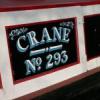

Peugeot 106
Patron-
Posts
1,389 -
Joined
-
Last visited
About Peugeot 106

Profile Information
-
Gender
Male
-
Location
Cumbria
-
Occupation
Self Employed
Recent Profile Visitors
Peugeot 106's Achievements
-
If the prop also turns fine by hand both ways when in neutral then it sounds like the gearbox
-
Peugeot 106 started following Llangollen - dodgems ! , How real is the linseed oil sunlight combustion risk? and Advise
-

How real is the linseed oil sunlight combustion risk?
Peugeot 106 replied to Gybe Ho's topic in Boat Building & Maintenance
Liquid Molly -

Oh oh that looks expensive
Peugeot 106 replied to Mike on Sea Hustler's topic in Boat Building & Maintenance
Not my expertise. The steel Bruce Robert’s rotted in a marina in southern France when my friend who owned her was ill and failed to keep up with the maintenance i wouldn’t worry about the Galvanic Isolator for a moored yacht but anodes are a must! good shortish youtube by Force Four called Boat Anodes Everything You Need to Know may be worth watching It would be good to have some photos of Sea Hustler under full sail when you get a chance -
My gearbox is mechanical PRM 120. It is held by bolts from inside the aluminium bellhousing to the aluminium gearbox case. 2 bolts had come out and one of them eventually jammed between the flywheel and bellhousing bringing the engine to a stop. They were supposed to be loctited according to the instructions. I don’t think they had been loctite or tightened properly. The length of the bolts (set screws actually) is also dictated by the depth of the blind tappings in the gearbox. I don’t think they were the correct length
-

Oh oh that looks expensive
Peugeot 106 replied to Mike on Sea Hustler's topic in Boat Building & Maintenance
The galvanic isolator is only for when you are connected to shore power and should be in the earth wire close to the shore connection. It’s normally for boats moored in a marina so I wouldn’t worry about it if you’re on a mooring. Plenty on the web about it when you’ve time to read Galvanic corrosion is caused by two disimilar metals reacting eg with in your case salt. You don’t need a battery or mains power. You often see it on aluminium spars with stainless screws. You should use a paste eg Duralac )or nylon washers to isolate them but often people don’t as it’s more faff the more you think you know the worse it seems to get!! -

Oh oh that looks expensive
Peugeot 106 replied to Mike on Sea Hustler's topic in Boat Building & Maintenance
I used to replace most steel bolts with stainless as a matter of course. I could never understand why the steel ones were easier to undo until I read about “galling”. stainless - especially the cheaper and more readily available 304 grade and steel are also more likely to corrode when in electrical contact and salt water (galvanic corrosion). I wouldn’t worry overly about it but it’s worth knowing about. I discovered there were reasons steel ones were used rather than stainless ones other than cost and toughness and don’t substitute stainless for carbon willy nilly My memory is poor too so I have a card on the boat to remind me what to do before driving home. But then it relies on me reading the card before I leave……..when we had boats on moorings we were forever having to go back next day. Your lucky if you have a water taxi! I prefer to chew the cud with others but then quietly get down to it on my own with nobody looking over my shoulder. I’m retired so time thank goodness is not normally the issue. I also have a pension so buying most tools that make a job bearable is not normally an issue. I don’t have a Dave but do have an incredibly helpful welding fabrication shop that I’ve used for years for my many follies. can I recommend that Nigel Caldwells “Marine Diesel Engines” is an excellent book for DIY’s with older engines. I have the 3rd edition bought second hand from EBay. Glad your sorted -
It was the dogs in canoes on the aquaduct that worried us last year. We were just waiting for one to make a break for freedom………
-

Oh oh that looks expensive
Peugeot 106 replied to Mike on Sea Hustler's topic in Boat Building & Maintenance
So I’m puzzling now as to what I would make the spacer out of. Probably two flanges welded between a short length of pipe but it would need to have the faces machined. If he’s got a mate with the gear and interest? It looks doable if he can slide the shaft back to release the flange off the studs or it looks like he could put locking nuts on the studs and back them out. Then he’d only need to prise the flanges far enough apart to release the ridges which might be doable. All of it easier to say than do though he could check if all the studs/ bolts will undo easily on his mooring before heading for the hard if he prefers to do it while dried out Half the skill with these jobs can be knowing when to stop! -

Oh oh that looks expensive
Peugeot 106 replied to Mike on Sea Hustler's topic in Boat Building & Maintenance
I would expect you to be able to slide the prop and shaft through the stuffing box after unbolting the coupling But if the shaft is “hourglassed” (not my word!) like mine in the photo posted it gets nigh on impossible to slide as the hourglass locks it. Unless there is something I have missed that’s preventing you from sliding it. The only solution I think is a new shaft But if it’s only a couple of drops a minute, not overheating or shaking sounds like it’s fixed? It’s easy to get things out of perspective. If somebody else had fixed it for you you probably wouldn’t have a care even though in all likelihood you have done a better job Believe you me I struggled. At least you don’t have to paint it. I removed every trace of paint off my Narrowboat and then painted it with the wrong primer. I cried. luckily yet again on my own in a barn in the back of beyond. But over 2000 miles later at 3mph we’ve had some great holidays and I’m actually quite proud of it. So the flexible bit is the rubber lined X spider piece held between two castings with flanges at each end. A bit like one of the joints on a Morris 1000 propshaft with flanges at each end -

Oh oh that looks expensive
Peugeot 106 replied to Mike on Sea Hustler's topic in Boat Building & Maintenance
I found the engine alignment to be really tricky especially achieving an even weight on all 4 mounts so that it can't rock. And that was with a R & D where they allow you 0.25mm. After all he had done I was very surprised how quickly he seemed to have achieved it but then I suppose if you have a sharper brain than mine and also get lucky. It was in my case and others I've seen do it extremely frustrating and probably one of the worst jobs I've done. It was only @Tracy D'arth that insisted that I must keep trying that got me there. But I had a new shaft and packing so there was little doubt where the problem lay From Mike's post which came while I was posting mine all seems to have resolved itself so you have another happy punter! As I said I don't understand the coupling he has. For the record is the spider in the outboard (of the CV joint) part or the inboard part please? I presume its in the inboard but in truth it could be in any of three places? -

Oh oh that looks expensive
Peugeot 106 replied to Mike on Sea Hustler's topic in Boat Building & Maintenance
Firstly please accept my Apologies Tony. I have reread the entire thread and you have indeed given him excellent advice re alignment of the engine including the obvious suggestion to replace the packing while the engine was out when he could have also probably inspected the state of the shaft The boat I was talking about that was a corten steel Bruce Roberts retrousse design around 30 feet built around the same time as Mike's Huskey so they could easily have had similar mountings. That was my one steep learning curve about couplings. I would still perform my tests as motoring along in forward at economy revs is very different from needing a crash stop in reverse. But as they say he is where he is and having had similar problems at a similar age on my own boat I am certainly not going the criticise. sometimes things eg packing bed in and resolve themselves. I for one hope this is the case My one remaining daft question is Mike when you checked the "gap" with the flanges unbolted did you hold one flange still and rotate the other through 90 degrees and check each time? -

Oh oh that looks expensive
Peugeot 106 replied to Mike on Sea Hustler's topic in Boat Building & Maintenance
My early days on small, aged yachts. All the stern glands leaked quite a lot. “ that’s what the bilge pump is for” once and engine mountings came loose in the middle of the night. The whole boat vibrated like mad but the coupling wasn’t damaged and all was well when we bolted the engine back down. Another boat used to throw couplings if you put it in reverse too quickly or with too many reverse revs. Our expensive solution was to buy a few couplings on sale or return as spares and approach all harbours slowly so we could enjoy our holiday. Only the owner was allowed to touch the engine controls. When we finished the holiday the boat was fitted with a different engine (and probably a new but different set of problems) in those long gone days we didn’t have a clue about finesse and couplings ( except I seem to remember they were Vetus and expensive) and we certainly never thought we needed feeler gauges or heaven forbid a dial indicator. Ignorance was bliss. “It’ll be fine that’s what that rubber thing is for” In fairness with a Narrowboat the engine probably does more forward/ reverse in a week than most of the yachts I’ve sailed on probably do in a few years My Narrowboat used to leak a lot through the gland unless I tightened it so hard it got hot before I aligned it properly. It hasn’t leaked since what I am saying is that I think you should probably make sure you have checked the alignment properly. You could send a picture of the coupling I’m sure someone will be familiar with it. I’m a bit worried if you have never split it though I don’t know the design and only have experience of the sandwich type I have read that couplings can appear aligned but when split tell another story. But you are probably understandably completely fed up with messing about with it At the least I would be trying it full ahead and full astern including quick changes in case you find yourself coming up to a pontoon too quickly before venturing forth. After that employ a bit of mechanical empathy and don’t let your mates play racing car drivers. DAMHIK Mike Knowing what I know now I’d be looking at checking it but I do realise that as I age I am getting fussier. In my youth as you probably gather as long as the tinnies weren’t being shaken……. There is loads written on this and most other boating forums re alignment, couplings and drips. It might not be as big a job as you think. (Or it could be a pig) -

Oh oh that looks expensive
Peugeot 106 replied to Mike on Sea Hustler's topic in Boat Building & Maintenance
My shaft when I discovered why i couldn't stop it leaking! Mud and sand can be even more abrasive if you dry out every tide and there is a strong flow. As i said in a previous post you may be able to slide it a bit if its not too bad Also when you checked alignment did you undo the bolts and take out the flexible insert or did you just fasten the dial gauge to check the assembled the assembled coupling? As I understand it you should take out the bolts and flexible insert before checking Best tip is to remember to grease it well with proper gland grease whenever you stop the engine so its not dripping when its not running and maybe get one of those battery operated barrel pumps or a can you lift out easily if you get a lot of water -

Oh oh that looks expensive
Peugeot 106 replied to Mike on Sea Hustler's topic in Boat Building & Maintenance
Don’t forget the Lottery ticket. You may be able to afford a Narrowboat Glad it’s ended well -

Oh oh that looks expensive
Peugeot 106 replied to Mike on Sea Hustler's topic in Boat Building & Maintenance
I’m not sure either though there are loads of similar glands on the web. It’s critical so I’m not risking bad advice. Very good idea to dry out first. Have some wood bungs, rags and a hammer handy just in case you don’t get it back together before the tide returns. You need to be able to bung it up Very good articles on Cox Engineering website. Have a read. I’d be sending them photos in the morning. Also Norris could probably advise. As I too am a relative amateur I try to get as much advice as possible not only from this forum First I’d be seeing if I can without risking damage get any movement on the nuts just to see. You never know you may be lucky if there’s been plenty of grease around and then you could just try to adjust it and see if that does the job. Hopefully your next job is to buy a lottery ticket! If Cox and/or Norris can’t help ask them if they know who to ask? I presume you have read up on how to size/change the packing.If it all comes apart I’d repack having squirted loads of grease in the stern tube but I don’t think I would risk it on a mooring, especially if there is any current. You really don’t want the shaft moving. If you can, inspect the shaft for wear when you have it all apart. Mine was really badly worn and I needed a new shaft but you may be able to move it in or out so it wears on a new point. Some areas eg Morecambe Bay are really abrasive not only on mooring swivels. Stating the obvious I wouldn’t be using heat down there because of the fibre glass if the nuts are fast but there may be ways of taking the heat out by wrapping wet rags round the shaft or whatever. You need decent reliable advice from someone who’s been there and got the T shirt. They will exist. There are far more yachts and boats than canal boats. You just need to find them. Let your fingers do the searching As always good luck





